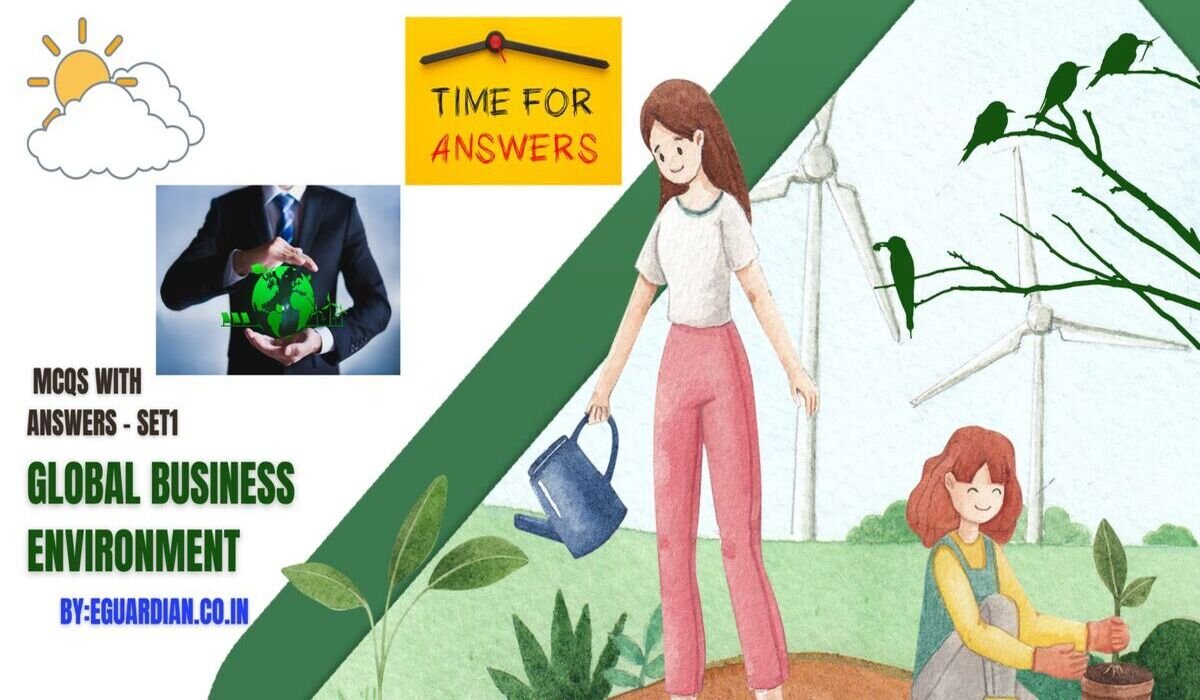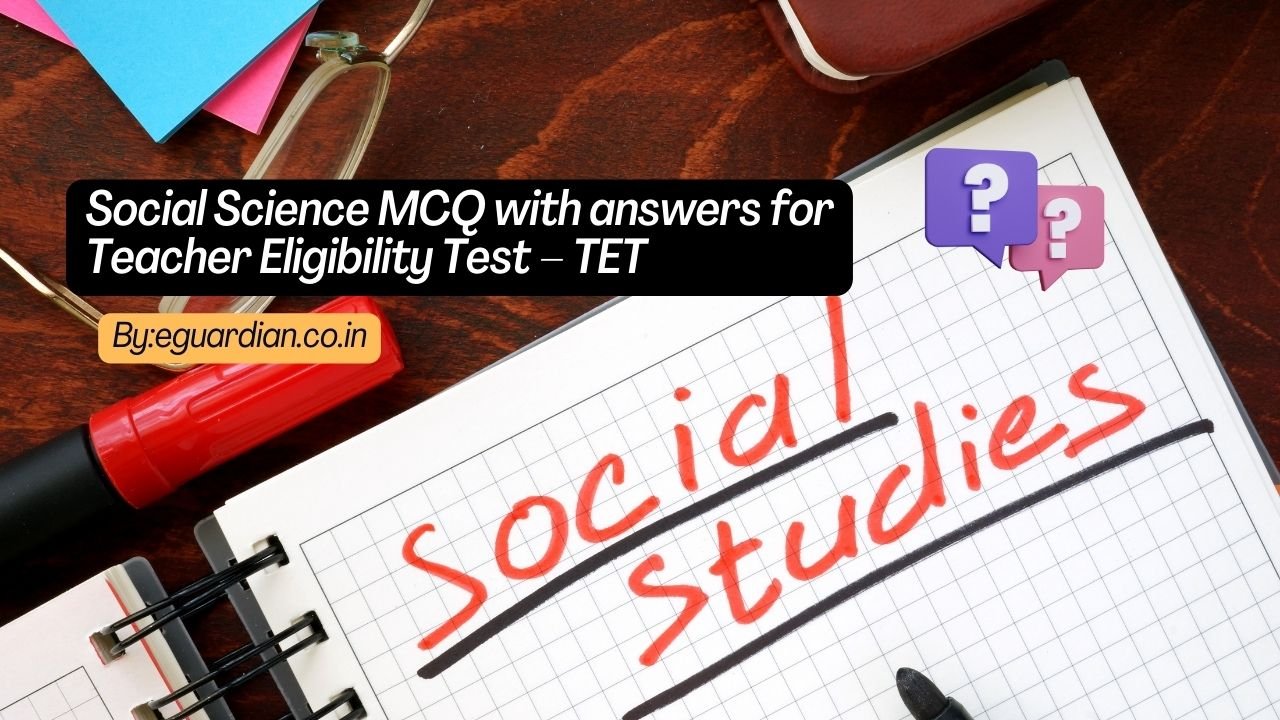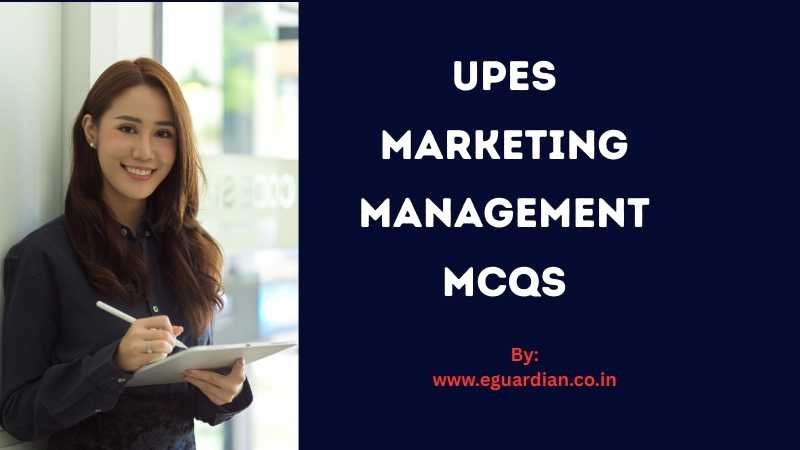Organizational Behaviour MCQ | MCQ on Organizational Behaviour UGC NET and other competitive and academic examination preparations.
Organizational Behaviour, a multidisciplinary field that explores the interactions and dynamics within organizations, is of paramount importance in today’s rapidly changing business landscape. As professionals, students, and academics seek to deepen their understanding of this subject, the need for comprehensive study materials becomes imperative.
This article aims to provide a valuable resource for individuals preparing for the UGC NET exam or those simply looking to test their knowledge of Organizational Behaviour through Multiple Choice Questions (MCQ).
By offering an extensive range of MCQs specifically focused on Organizational Behaviour, this article intends to enhance readers’ comprehension and foster a deeper appreciation for this crucial aspect of organizational management.

Organizational Behaviour MCQ
1. According to ___ “Leadership is the process of influencing others towards the ___. It is the ability of a manager to induce subordinates to work with zeal and confidence”.
Ans: Koontz and O’Donnell, the accomplishment of the goal.
2. An ___ believes in strict commands. He passes orders and relies on negative influences. He gives orders which must be obeyed by their subordinates. He determines the policies of the group without consulting them.
Ans: Autocratic leader
3. In ___ decision-making power is dispersed among the group members. Policies are worked out in ___and with the acceptance of the group.
Ans: Participative style, group discussions
4. According to ___ theory, leadership qualities and their effectiveness are independent variables. These qualities cannot be acquired by formal training.
Ans: The Great Man Theory
5. Fiedler has introduced a scale called ___ to determine the style of leadership.
Ans: LPC (leased preferred co-worker)
6. In ___ a style of leadership is matched with the maturity of the followers. The maturity of the follower is decided by his ability to take responsibility, his education, his willingness to do a task, and his capacity to set high but attainable goals.
Ans: Situational model
7. ___was created and developed by Robert Blake and Jane S. Mouton.
Ans: The managerial grid theory.
8. Charismatic leaders influence followers by their ___ and by showing great passion and devotion.
Ans: Unique personal quality
9. Transformational leaders guide followers by___, provide vision and mission and show trust among the employees.
Ans: Providing a sense of respect.
10. Visionary leaders are ones who have ___a realistic, credible, and attractive vision of the future.
Ans: Ability to create and articulate
11. Dr. Hans Selye said that in a stressful situation, there can be a physiological response in people, which acts as a defense system that copes with the demand of the environment.
Ans: True
12. Demands are the pressures, responsibilities and uncertainties, faced by an individual at the workplace.
Ans: True
13. In the exhaustion stage, our body and mind are able to repair the damage caused by stress.
Ans: False
14. ___ exists when a job includes such duties and responsibilities, which conflict which each other.
Ans: Role conflicts
15. ___ is related to low job satisfaction, job anxiety and physical and mental health.
Ans: Role ambiguity
16. The main characteristics of Type A personalities are that they are ___, ___and set high targets for themselves.
Ans: Hard-working, ambitious.
17. The Type B personalities work at a ___, and set a reasonable target for themselves.
Ans: Slow pace, reasonable targets
18. Positive stress occurs when the level of stress is high enough for ___the employee to move into action to get things done.
Ans: motivate
19. If a person is under high or excessive stress, he may feel ill and the reactions can be___, ___ errors, accidents, poor performance or dissatisfaction.
Ans: absenteeism, turnover
20. The adverse effect of stress can be seen in terms of lower Productivity, Turnover, Absenteeism, and Lower Participation in Organizational Activities. True / False.
Ans: True.
21. Excessive stress results in job burnout where the work environment becomes adverse and the employee finds it difficult to confront and manage stress. True / False.
Ans: True.
22. Negative stress will not affect the decision-making ability of the employee. True / False.
Ans: False
23. In order To eliminate stress, one must prioritize the task and ___, ___, and ___, the time in such a manner that goals can be achieved without any delay.
Ans: plan, organize, control
24. A friendly supportive atmosphere with clear communication and participative decision-making can make the employee happy at the workplace. True/ False
Ans: True
25. ___ is a key idea that the sender wants to communicate.
Ans: Message
26. Downward communication represents the flow of information from the top level to the lower level of the organization.
Ans: True
27. Diagonal communication is the most convenient and informal style of communication as it does not involve any positions or protocols to be maintained.
Ans: False
28. ___ is the ability to understand and be sensitive to the feelings, emotions, thoughts and situations of others.
Ans: Empathizing
29. ___ is the process of receiving signals from the sender and paying attention to them.
Ans: Sensing
30. To become an active listener, one should continuously follow these three techniques – sensing, evaluating and ___.
Ans: Responding
31. ___ is the behavioral reaction to the exercise of power.
Ans: Influence
32. Interventions could be___ coaching, problem-solving, task force establishment, ___ consultation, life and career planning, planning and goal setting, and strategic management.
Ans: Structured training, techno structural activity
33. The theory of Transactional Analysis was developed by ___.
Ans: Dr. Eric Berne
34. ___ defines a boundary between one organization and the other.
Ans: Culture
35. Organization culture cannot be created ___.
Ans: Overnight
36. An organization becomes ___ in culture when its employees are not ready to support the values and beliefs of the organization.
Ans: Weak
37. Strong cultures are successful at translating their ___ into daily actions.
Ans: Abstract beliefs
38. The degree to which employees are encouraged to be innovative and risk-taking is known as___.
Ans: Innovation & risk-taking
39. The degree to which work is organized around teams rather than individuals is known as ___ orientation.
Ans: Team
40. Power is the ___ that A has to ___ the behavior of B.
Ans: Capacity, Influence
41. Conflict is a perceived ___between two or more parties that result in mutual opposition.
Ans: Difference in values
42. ___Conflict is always negative, it upsets the proper functioning of the organization, and creates chaos.
Ans: Classical conflict approach
43. ___ encourages conflict on the grounds that a harmonious, peaceful, tranquil and cooperative group is prone to becoming static, apathetic and nonresponsive to needs for change and innovation.
Ans: The interactionist view
44. When departments have very little interaction with each other but can be affected by each other’s actions, then it is known as ___
Ans: Pooled interdependence
45. When two or more people are ___ in accomplishing the task it is known as reciprocal interdependence.
Ans: Mutually interdependent
46. If the reward plan is associated with group performance and tasks are interdependent, then instead of cooperation, competition increases and people try to succeed ___
Ans: At the expense of others.
47. Intra-role conflict occurs when one person receives different messages from two role senders and he is unable to meet ___.
Ans: Different expectations
48. Person role conflict arises when a person has to perform a task that is against his ___.
Ans: Value system
49. When a person has to choose between two negative situations, he faces ___ conflict.
Ans: Avoidance –avoidance
50. Optimum level of conflict can ___ which can have a positive impact on the organization.
Ans: Stimulate competition
51. ___ style is used in a situation when an issue is important for another person and you want the other person to learn from his mistakes
Ans: Accommodating
52. ___ is a win-win position for both parties where people share information, try to listen to others and show cooperation.
Ans: Collaborating
53. Authority is a ___. Power on the other hand is ___ others.
Ans: Right, ability to influence
54. Authority is a ___ attribute whereas power is purely a ___ attribute.
Ans: Positional, personal
55. Legitimate power is derived from the socio-legal rights of a manager.
Ans: True
56. The implementation of a change is a multidimensional, complex process. The end result of the implementation is ___ and ___.
Ans: Institutionalization, stabilization
57. OD is a planned effort initiated by ___ to help an organization develop its diagnostic skills, coping capabilities, and linkage strategies, in the form of temporary and semi–permanent systems, and___.
Ans: Process specialists, a culture of mutuality
58. Use of ___ means and ___ objectives make politics bad.
a. Objective and subjective
b. Formal and informal
c. Positional and personal
d. Legitimate and Illegitimate
Ans: d. Legitimate and Illegitimate
59. Which of the following is not an individual factor that leads to increased political behavior?
a. People believe they have the power to manipulate the outcome
b. People are comfortable using politics to further their personal interests.
c. People having a strong sense of justice
d. People have less dependence on organization
Ans: c. People have a strong sense of justice
60. Which of the following is not a strategy used to achieve political ends:
a. Dependency
b. Rule manipulation
c. Image building
d. Inspirational appeal
Ans: a. Dependency
61. Organizational chance is always initiated by the ___. A need for change can be proposed by ___in the organization but action is taken by the top management only.
Ans: Top management, anybody
62. Kurt Lewin suggested that to bring about planned change in the organization there should be a multi-stage process. His model of planned change has three steps: ___, ___, and ___.
Ans: Unfreezing-change-refreezing
63. Individuals join groups because they want jobs ___.
(a) authentication
(b) clarification
(c) satisfaction
(d) modification
Ans: Satisfaction
64. Artifacts are ___ but often not interpretable.
Ans: Visible
65. ___ is the initial stage of group development.
Ans: Forming
66. The third stage of group development that is marked by harmonious relationships is known as___.
Ans: Norming
67. In the ___ stage, members are expected to break off their social ties and return to their original workplaces.
Ans: Adjourning
68. If people do not have enough information regarding the process and impact of change, people to___.
Ans: Resist to change
69. When people do not have adequate information, they substitute it with speculations and guesses which are mostly ___
Ans: Negative and fearsome
70. If individuals and groups themselves are involved in designing and implementation of change, they overcome their feeling of ___
Ans: Uncertainty and helplessness
71. People will give up resistance to change if and when they feel empowered. This empowerment is possible through encouragement, support, training, development, counseling and ___
Ans: Availability of resources
72. The main goal of a planned change in an organization is to improve the ability of the organization to ___
Ans: Adapt to changes in the environment
73. Evolutionary change is gradual, incremental, and specifically focused and ___ is sudden, drastic, and organization-wide.
Ans: Revolutionary change
74. Economic, political, and global forces affect organizations ___ the process they adopt for producing goods and services.
Ans: 4. By forcing them to change.
75. The factors which force organizations to bring about change are ___.
Ans: Competitive factors, demographic and social factors, ethical and technological factors.
Thanks for visiting our website, if you like the post on Organizational Behaviour MCQ.



